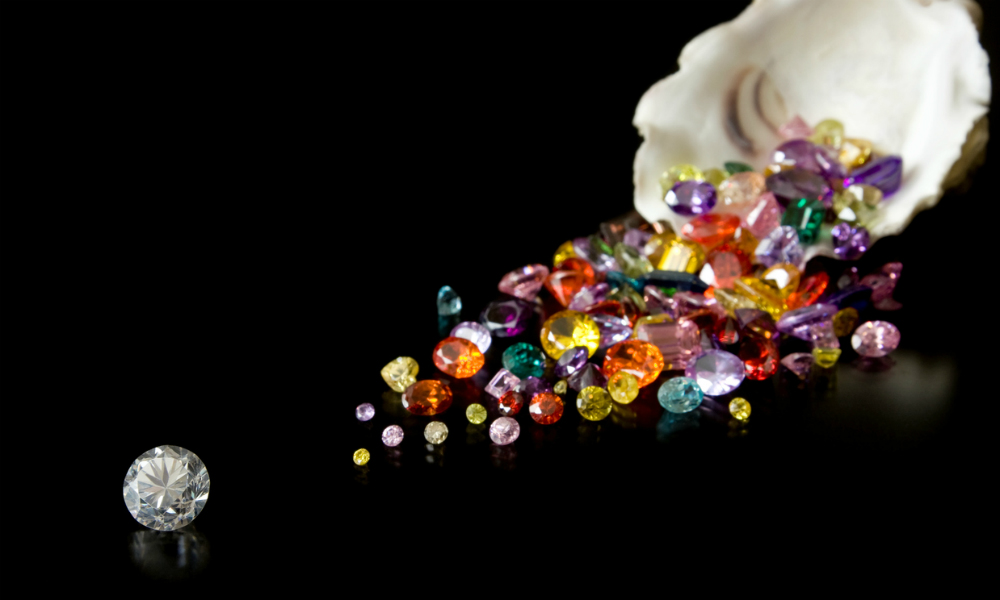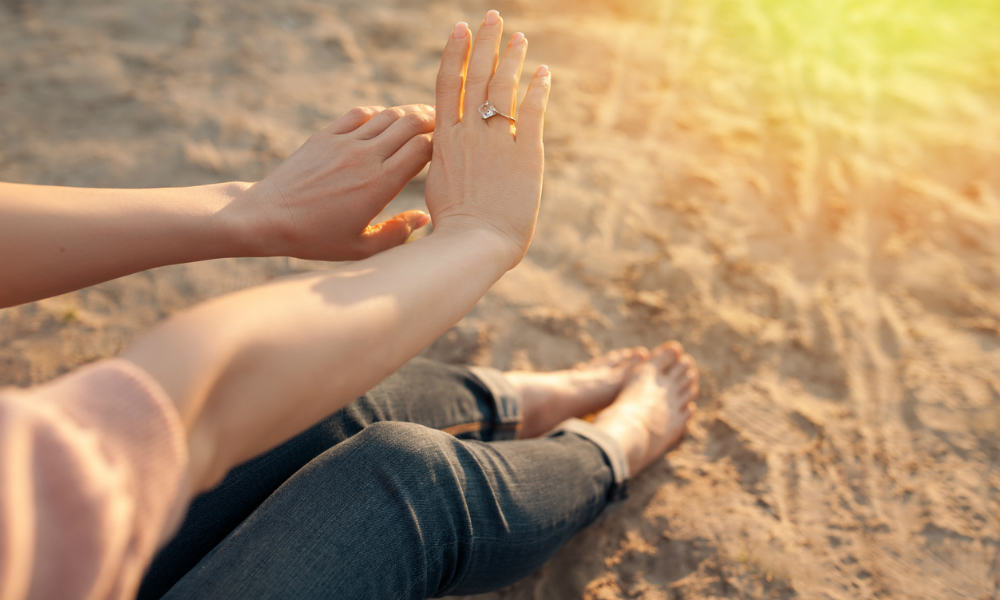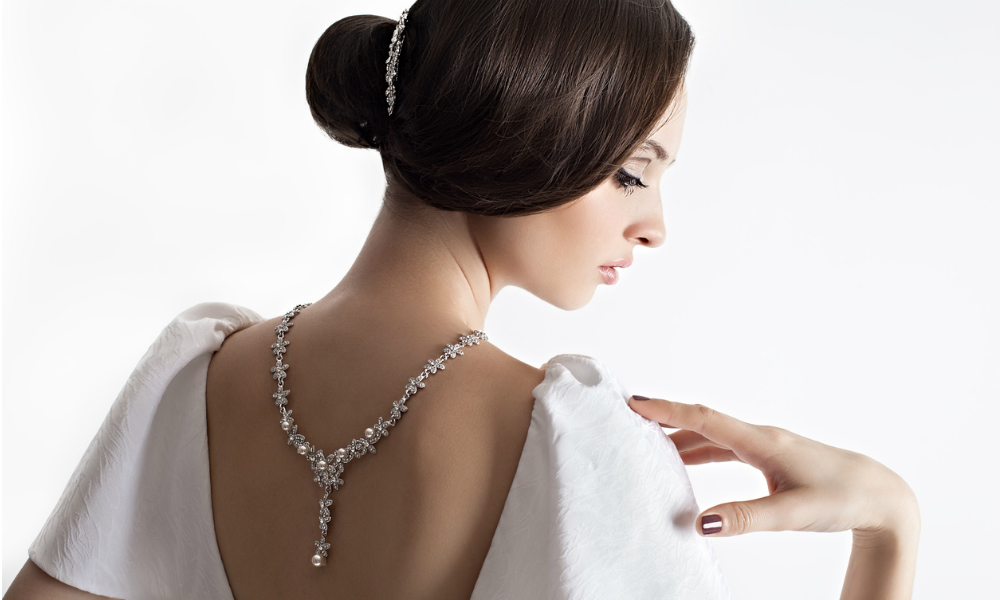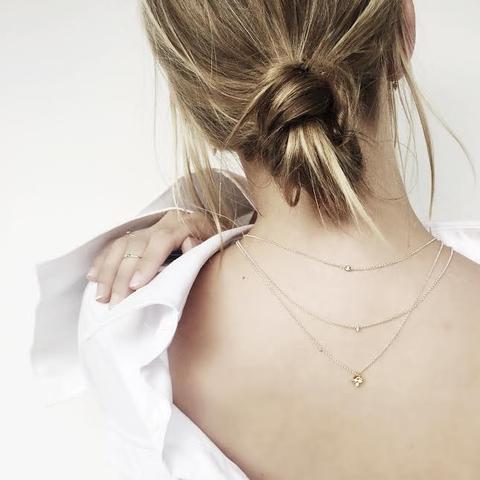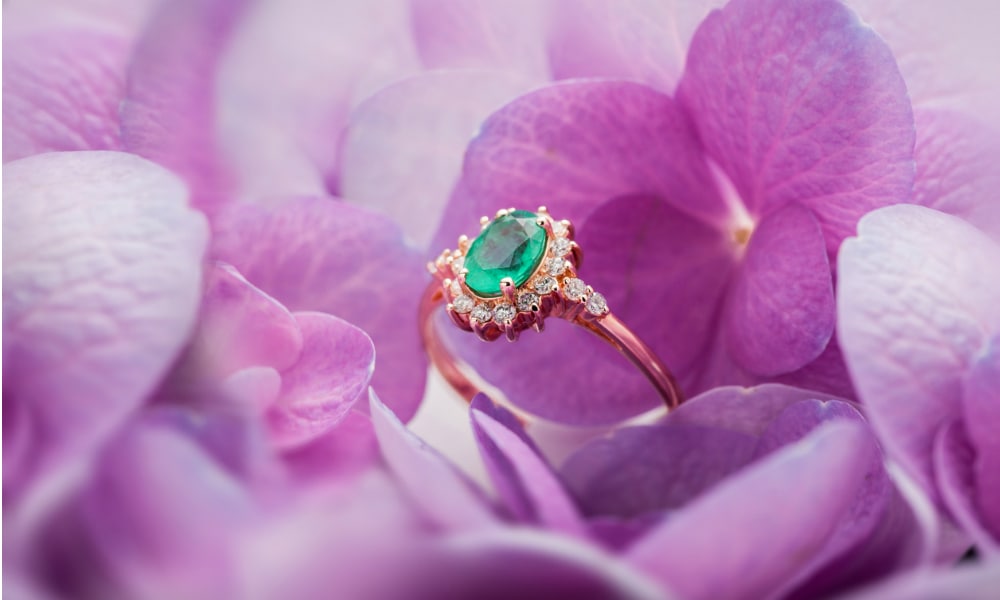Diamonds
How do Diamonds Get Their Color
How do naturally colored diamonds end up with some of the many amazing hues that we attempt to recreate in much more common colorless stones? In truth, there are a number of factors that must fall into place in order for the Earth to create these colorful treasures
naturally. Here’s a brief overview of the conditions necessary to create these fancy gemstones.
You probably know that diamonds are created by carbon that is both heated and compressed, then pushed to the surface of the Earth (or close to it), resulting in the colorless stones that are the bread and butter of the diamond industry. However, no diamond is perfect, and it is the impurities in the stone that can cause coloration. This works in a couple of ways. First, carbon is rarely found in a completely undiluted state. Often there are other elements in the vicinity that can lead to slight discoloration in the finished product, which is why colorless diamonds are so desirable.
However, even rarer than completely colorless diamonds are those that display the intense color indicative of mass amounts of some other element in the environment. Boron, for example, will lead to rare blue hues in diamonds while nitrogen will produce the much more common yellows and browns. Radiation will produce a green color (uh, kryptonite, anyone?) and unusual stresses that trap electrons in the stone are thought to result in pink or reddish hues. But that’s not all there is to it.
Flaws within the stone can magnify or even cause coloration because of the way light entering the stone is refracted. For this reason, a stone that is already colored may be more appealing with a flaw since it can greatly enhance the color, pushing it into the class of a “fancy colored diamond”, which makes it exponentially more valuable.
It’s pretty interesting that the impurities and flaws in diamonds can actually add to their value, but remember that they have to achieve fancy color status in order to be worth more. If the color is pale in a stone, it will hold a low value since it is neither colorless nor saturated (making it one of the most common geological blunders). So before you buy a rare colored stone, make sure it meets proper standards of rarity so that you get a diamond that is as valuable as it is desirable.
Diamonds
Girl’s Best Friend: The Endless Appeal of Diamonds in Summer
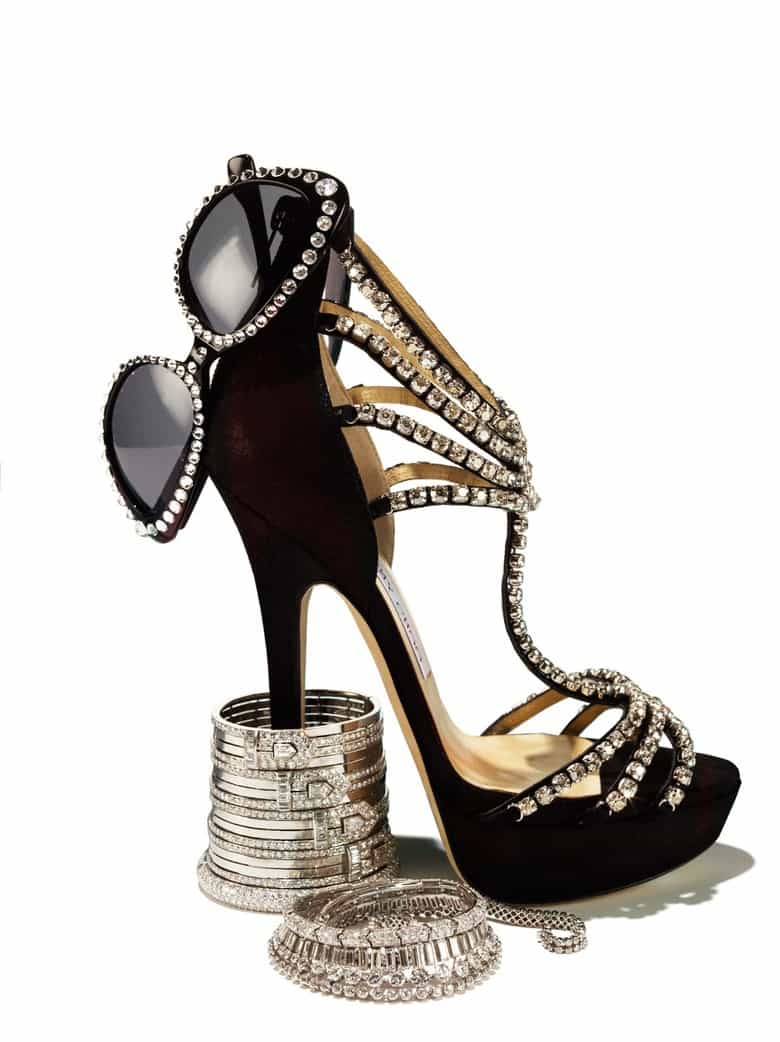
Certain things just never go out of style. Art deco, sailor jeans, a navy skirt, or a lavender sweater tossed over a perfectly fitted tee is a good start to any list. But how to make them truly special? I say diamonds, any kind of diamonds, and especially in the summer. Perhaps you can add them your shoes or maybe the stones are set into a gorgeous cuff that’s so absolutely unique that everyone is thinking you actually have seven bracelets on. What better way to wear diamonds than in a casual, yet thrilling way? This look is always going to be a winner. Diamonds a little too steep? I am a big lover of wearing a bit of rhinestone in the big heat, too.
Diamonds
5 modern ways to wear diamonds
If you’ve found yourself browsing this site, you probably appreciate contemporary styling and quality accessories just as much as we do. Whilst diamonds are undoubtedly gorgeous and glamorous, our aesthetic focusses on modern shapes and styles. A well cut diamond doesn’t need to scream its arrival to everyone in the room: its natural beauty will shine best when worn lightly and with confidence.
With diamonds no longer reserved just for engagement rings, more women (and men) are investing in their own diamond jewelry, and expressing themselves through a range of modern ways to wear. We’ve put together these 5 contemporary ideas for incorporating diamonds into your wardrobe, to inspire those who like to inject a little beauty into their life every day.
1. With your favourite casual wear
Gone are the days when the diamond necklace was something to be kept in a special drawer – only exhumed for weddings and dinner parties, and generally washed out by a garish cocktail dress. We believe diamonds are supposed to be worn any time you choose, but especially on those days you just feel like snuggling up in a favorite piece of cosy knitwear! And what better partner than this Alexander Wang cashmere and wool pullover, which will set off the sparkle on a subtle diamond perfectly. The deep neckline makes it the ideal piece for framing a simple classic, such as our teardrop diamond necklace.
A perfect, clear diamond also looks amazing against a crisp, white shirt. This look is something you can work in the office, or dress down for some casual weekend relaxation which a hint of luxury. We love this beautiful boyfriend shirt from Annaquan, and think it sets off our understated necklaces perfectly:
2. With I-Don’t-Even-Care Hair
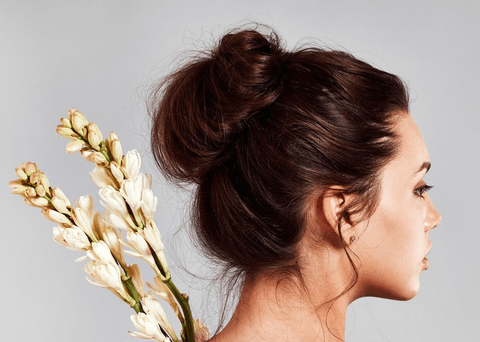
When wearing diamond earrings, there is a temptation to make sure your hair is perfectly styled with not a strand out of place. Surely, you owe it to your best accessories to make sure they are shown off? Well, the thing about diamonds is, they know how to steal the show all by themselves. Their natural beauty can have a particularly strong impact when worn against a naturally relaxed hair style, so there’s no need to stress or save your favourite pieces for special occasions. Of course, you’re free to spend as long as you like arranging that artfully deconstructed messy bun, we won’t tell anyone.
3. With tattoos and eyeliner
Approaches to fashion are more varied than ever before, with women enjoying the economic freedom and confidence to experiment with everything from tattoos to fabulous make-up. These looks are no longer niches to be spotted in the backstreets of major cities; they can be found everywhere from the catwalk to the boardroom. If you enjoy playing with your style, diamonds could be the perfect complement to your original look. They can offset an androgynous outfit with a subtle sparkle, or vamp up a gothic look for a major impact which will bring a little luxury to your style.
Cara Delivingne has a well recognised grungey style, and often incorporates diamonds into both her high fashion and casual looks. Here, she can be seen rocking a pile of stacking rings to bring some glamour into an otherwise dark, sleek wardrobe.
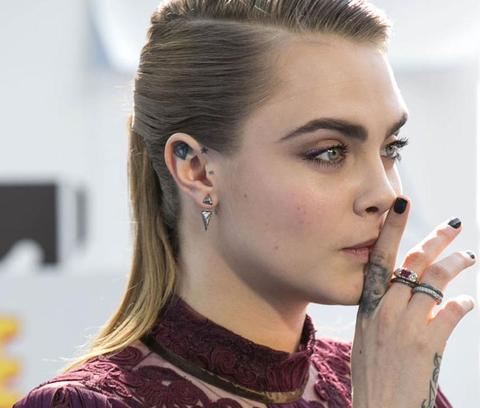
4. With friends
Remember those friendship bracelets we all made in High School? Hours of knotting colored thread, which would then be proudly worn as a symbol of your popularity until they fell off? Grown-ups can do friendship bracelets too – and how better to acknowledge a life long friend, than with a much longer lasting diamond bracelet. This might sound excessive if we were talking about the garish tennis bracelets worn in 90’s films, but today’s contemporary aesthetic is simple and minimalist – and also more affordable.
A perfectly cut subtle diamond, hanging from a gossamer thin chain, could be the perfect gift for a special girlfriend which is sure to be treasured forever. Maybe you have a sister turning 21, or you want to thank that best friend who turned out to be a superstar bridesmaid. Perhaps, it’s simply time to treat yourself. Whatever the occasion, the current minimalist trends in jewelry mean bracelets are having a moment again.
5. With a clear conscience
Diamonds are always going to be a considered purchase, whatever your style and budget. Take your time choosing the perfect style for you: maybe you’re lusting after a classic diamond necklace which can be worn any time, or perhaps you are after something softer and more feminine. Whatever your style, we know contemporary buyers tend to come with an ethical conscience and awareness of world issues. This is why we only use Kimberley certified diamonds. The Kimberley Process Certification Scheme supports the recognition of legitimate governments by the UN, and means buyers can be sure that their supports efforts to establish peace in vulnerable parts of the world.
Diamonds
What Creates the Color of Colored Diamonds?
The traditional white diamonds (colorless diamonds) that we all know about, like those found in most classic engagement rings, pendants and other diamond jewelry, are created from a complex process involving super-heated, highly pressurized carbon molecules close to the Earth’s core. But these are not the only diamond types out there…
For better understanding, first things first:
How are Diamonds Formed?
All diamonds start the same. Here is a great clip by the National Geographic channel (less than 3 minutes long) explaining and showing how diamonds are made:
What are Colored Diamonds?
Natural Colored diamonds are created in the same fashion, with one unique difference. When foreign particulates are trapped during the crystallization process from which diamonds are formed, it effects and alters the chemical process and thus, changes the outcome. The result is a beautiful, rare, and exceptional diamond with unique colorings – called natural colored diamond.
How do Colored Diamonds get Their Color?
Different trace minerals and particulates result in different hues, as well as different intensities of those hues.
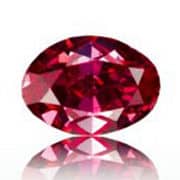 Brown, Red & Pink Diamonds
Brown, Red & Pink Diamonds
These diamonds owe their color to a combination of intense pressure and heat. While still buried deep within the earth, these factors cause distortions in the crystal lattice that absorb green light, thus reflecting a pink hue. Ultra-rare red diamonds, which are essentially just deeply colored pink diamonds, have the same cause of color.
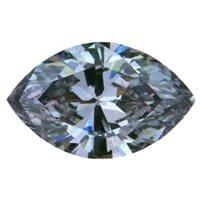 Gray & Blue Diamonds
Gray & Blue Diamonds
For the most part, blue diamonds get their color from boron. When this impurity is present, it bonds to carbon in the crystal structure, absorbing red, yellow and green areas of the color spectrum.
Green Diamonds
It’s not until the last leg of their journey to the earth’s surface that diamonds get their green color. Just as they are about to leave the uppermost layer of the crust, these stones absorbs naturally occurring radiation, which causes them to reflect a green hue by absorbing red and yellow light.
Violet and Purple Diamonds
So far, all scientists are certain of is that the cause of color for purple and violet diamonds is crystal distortion. However, it is believed that the presence of hydrogen may be partly responsible for their hue.
Orange and Yellow Diamonds
The remarkable hue of yellow and orange diamonds can be attributed to one element: nitrogen. While a diamond is forming, nitrogen atoms will arrange in such a way that that blue light is absorbed, thus producing a yellow color. A specific grouping of nitrogen atoms is also responsible for the shading of orange diamonds, but will absorb light in both the blue and yellow spectrums.
Colored Diamonds Amazing Color Combinations
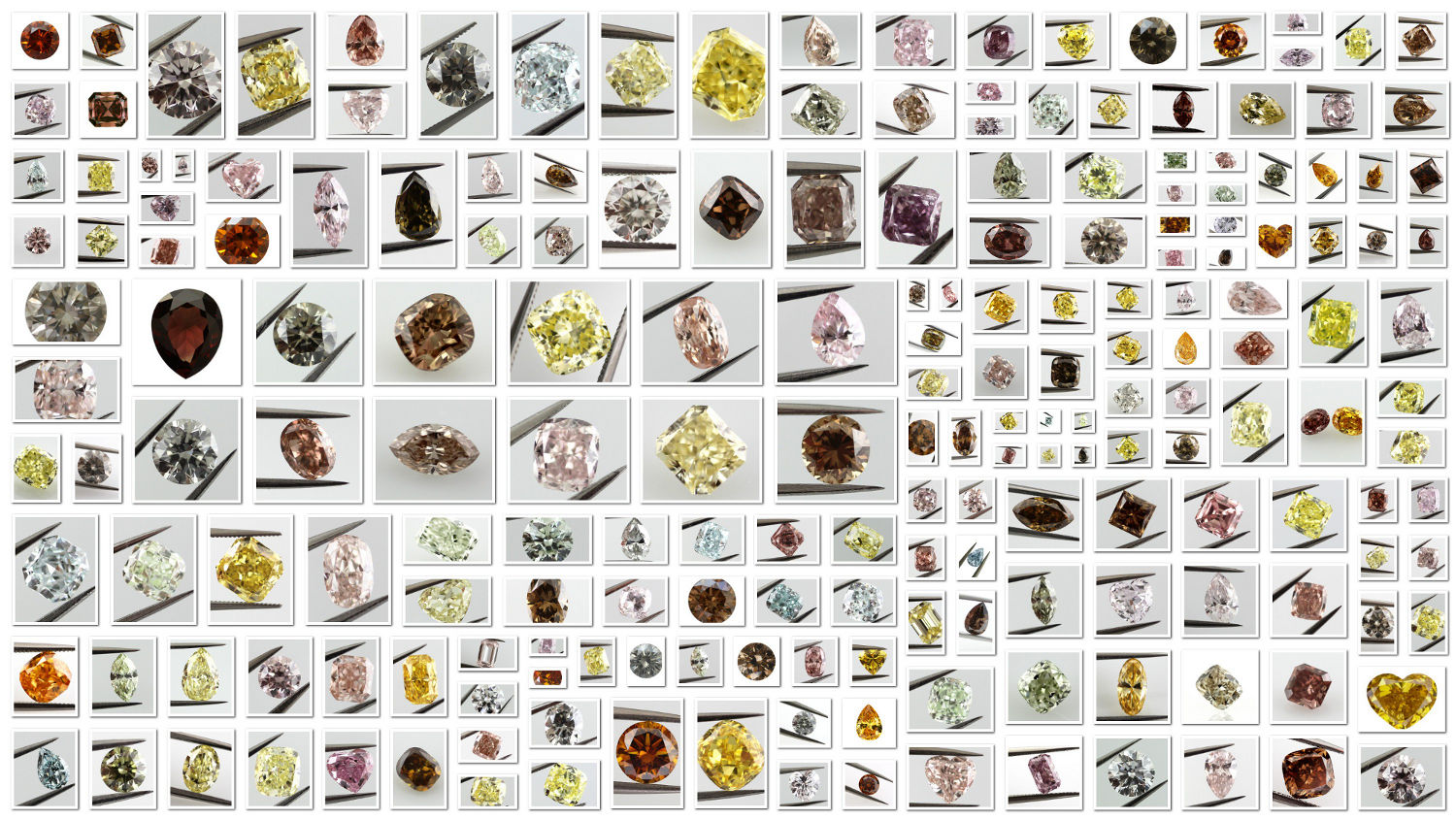 Colored diamonds come in as many hues and intensities as nature can possibly muster. The reason is not only can trace minerals influence color, but also variations in the amount of pressure exerted to produce the diamonds, as well as radiation levels in the Earth’s mantle layer can also influence diamond colors. In order to produce a particular hue, thousands of variables must be present in just the right amounts, at just the right times. Since scientists have never been able to observe a natural diamond being formed, the exact type and proportion of variables necessary are nearly impossible to determine. However, there are basics that have become understood.
Colored diamonds come in as many hues and intensities as nature can possibly muster. The reason is not only can trace minerals influence color, but also variations in the amount of pressure exerted to produce the diamonds, as well as radiation levels in the Earth’s mantle layer can also influence diamond colors. In order to produce a particular hue, thousands of variables must be present in just the right amounts, at just the right times. Since scientists have never been able to observe a natural diamond being formed, the exact type and proportion of variables necessary are nearly impossible to determine. However, there are basics that have become understood.
For example, as mentioned above, boron produces natural blue diamonds, while hydrogen will produce violet and purple colored diamonds. Likewise, nitrogen in the right amounts will produce orange or yellow diamonds. Diamonds in the red to brown category have been scientifically proven to have an internal structure far more compressed than average white diamonds. According to the Natural Color Diamond Association, argyle diamonds show nearly ten times the amount of high pressure graining as more traditional diamonds. This graining is evidence of high-pressure conditions well above what it would take to form a white diamond.
As a result, even though there are only 12 base colors, there are hundreds of colored diamonds color combinations.
How are diamonds Colored?
In the above section we covered all of the reasons for natural colored diamonds. However, in recent years with the rise of popularity and demand for those diamonds, and with it the rise in their prices, the market for treated and color enhanced diamonds has evolved tremendously.
Important – Color treated diamonds are regular natural diamonds that were color enhanced – these are not lab grown diamonds. Therefore, their price is higher than the low color quality they were before the treatment.
The idea is to take diamonds with colors that are not desired – like pale yellows – and to enhance it dramatically (pale yellow to vivid yellow) or even to change it altogether to blue, purple and red.
The main methodology is called HPHT – High Pressure High Temperature. Interestingly, this same procedure that is used to enhance to strong colored diamonds can be also used to “paint” colorless diamonds. Taking cheap very light brown diamonds and turn them into D colorless diamonds.


